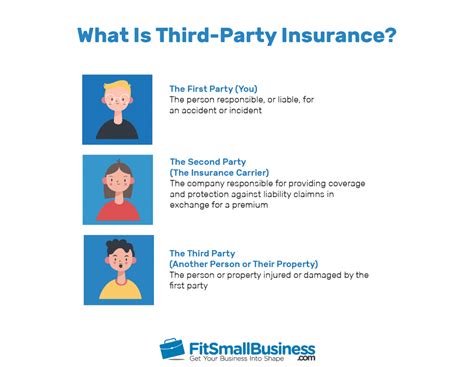Learn about P2P insurance, its history, how it works, benefits, and challenges in this comprehensive guide. Get insights from industry experts.
Understanding P2P Insurance
Contents
Peer-to-Peer (P2P) Insurance is a relatively new concept in the insurance industry that operates on a different business model compared to traditional insurance. Instead of policyholders paying premiums to a centralized insurance company, in P2P insurance, members pool their premiums together to cover each other’s losses. This means that the risk is shared among the group, and any claims made by members are paid out of the collective pool of funds.
One of the key principles behind P2P insurance is the idea of mutual trust and responsibility among members. Unlike traditional insurance, where policyholders may feel a disconnect from the insurer, P2P insurance creates a sense of community and shared responsibility. Members are encouraged to act in ways that benefit the entire group, as any fraudulent claims or risky behavior could directly impact the premiums and coverage of others.
Additionally, P2P insurance utilizes technology and digital platforms to streamline the insurance process. This includes using algorithms and data analysis to determine the risk profile of members, as well as providing a platform for members to connect and share information. This aspect of P2P insurance not only increases transparency but also reduces the administrative costs typically associated with traditional insurance.
Overall, understanding P2P insurance requires a shift in mindset from traditional insurance, as it emphasizes collaboration, transparency, and mutual support. As this innovative approach continues to gain traction in the insurance industry, it is important for individuals to grasp the underlying principles and benefits of P2P insurance.
History of P2P Insurance
Peer-to-peer (P2P) insurance has a fascinating history that dates back to the early 2010s. It was born out of the growing frustration with traditional insurance models and the desire for a more efficient, transparent, and customer-centric approach to insurance. P2P insurance first gained traction in Europe, with the launch of several innovative startups that sought to disrupt the insurance industry.
One of the earliest pioneers of P2P insurance was a company called Friendsurance, which was founded in Germany in 2010. Friendsurance introduced the concept of a peer-to-peer insurance model, where small groups of individuals could pool their premiums together to cover each other’s claims. This marked a significant departure from the traditional insurance model, which relied on large, centralized insurance companies to provide coverage.
Over the years, the concept of P2P insurance has continued to evolve and expand, with the establishment of new platforms and the introduction of innovative technologies such as blockchain and smart contracts. These advancements have further enhanced the transparency, efficiency, and trustworthiness of P2P insurance, making it an increasingly popular choice for individuals and businesses alike.
As P2P insurance continues to gain momentum, it is likely to play a significant role in shaping the future of the insurance industry, offering a viable alternative to traditional insurance models and providing consumers with greater control over their insurance needs.
How P2P Insurance Works
Peer-to-peer (P2P) insurance works by allowing individuals to form a group and pool their resources to cover each other’s insurance risks. This method of insurance is based on the principle of community support and assistance, with members contributing money to a common fund. In the event that a member experiences a loss or requires a payout, the funds are used to cover the claim, with surplus funds typically returned to members or used to reduce future premiums.
P2P insurance operates through a digital platform, where members can connect and create their own insurance groups. The platform facilitates the collection of contributions, management of claims, and administration of the insurance policies. This model promotes transparency and eliminates the need for traditional insurance companies, allowing members to directly engage with one another and collectively manage their insurance needs.
One of the key features of P2P insurance is the use of technology to streamline processes and reduce administrative costs. By leveraging digital tools, the platform can efficiently handle the entire insurance lifecycle, from enrollment and underwriting to claims processing and member communications. This technology-driven approach enhances the overall efficiency and accessibility of P2P insurance, making it an attractive alternative to traditional insurance models.
Furthermore, P2P insurance emphasizes the importance of risk prevention and loss mitigation within the community. Members are encouraged to adopt behaviors that minimize the likelihood of claims, as this benefits the entire group by preserving the collective pool of funds. Additionally, some P2P insurance platforms offer incentives and rewards for proactive risk management, fostering a culture of responsibility and mutual support among members.
Benefits of P2P Insurance
Peer-to-Peer (P2P) Insurance has numerous benefits that make it an attractive option for many individuals and businesses. One of the main advantages of P2P insurance is the potential for lower premiums. By eliminating the need for a traditional insurance company, P2P insurance can reduce the overhead costs typically associated with insurance, resulting in cost savings for policyholders.
Another benefit of P2P insurance is the increased transparency and trust within the community. Policyholders have the opportunity to directly interact with one another, fostering a sense of shared responsibility and accountability. This can lead to more efficient claims processing and a greater sense of satisfaction among members.
Furthermore, P2P insurance offers the potential for greater customization and flexibility in coverage. Members have the ability to tailor their policies to their specific needs, rather than being limited to standardized plans offered by traditional insurance companies. This can result in more comprehensive coverage and a better overall fit for individual circumstances.
In addition, P2P insurance promotes a sense of shared risk and mutual support within the community. By pooling resources and spreading the risk among members, P2P insurance can provide a sense of security and stability, particularly in times of need. This collaborative approach to insurance can lead to a more equitable distribution of costs and benefits.
Overall, the benefits of P2P insurance extend beyond the financial advantages, encompassing aspects of trust, customization, and community support. As this innovative model continues to gain traction, it is clear that P2P insurance has the potential to revolutionize the insurance industry and offer substantial value to its members.
Challenges of P2P Insurance
Challenges of P2P Insurance
Challenges of P2P Insurance
Peer-to-peer (P2P) insurance is a relatively new concept in the insurance industry, and like any innovative idea, it comes with its own set of challenges. One of the main challenges of P2P insurance is building trust and credibility among its members. Since P2P insurance relies on a community of individuals coming together to share risk, there is a need for establishing trust and transparency in the process.
Another challenge is the regulatory framework for P2P insurance. Traditional insurance companies are subject to strict regulations to ensure consumer protection and financial stability. P2P insurance platforms have to navigate these regulations while also creating a new model that is different from traditional insurance, which can be a complex and time-consuming process.
One of the unique challenges of P2P insurance is the risk of moral hazard and adverse selection. Moral hazard occurs when individuals take risks because they know they are not fully responsible for the consequences, while adverse selection refers to the tendency for higher-risk individuals to be more likely to join a P2P insurance pool, which can lead to imbalances in risk sharing.
Lastly, P2P insurance faces the challenge of scalability and sustainability. As P2P insurance platforms grow and attract more members, they need to ensure that they can handle the increased workload and maintain the financial stability of the pool. This can be a significant challenge, especially as the model continues to evolve and expand into new markets.












